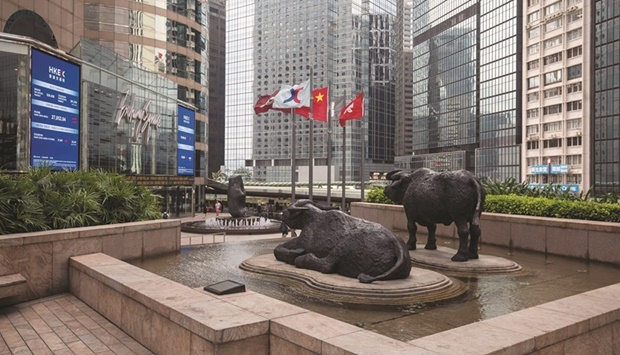Most markets sank in Asia and Europe yesterday following another painful sell-off on Wall Street, with investors’ focus on the Federal Reserve’s next policy meeting this week, where officials are expected to unveil their plans to battle soaring inflation.
Tech firms — which soared on the back of the pandemic — led the retreat in New York after weak subscriber figures from Netflix fuelled concerns that the end of lockdowns and reopening of economies is seeing consumers changing their spending habits.
That comes as traders contemplate the end of the ultra-loose monetary policies put in place by central banks in early 2020 to cushion the impact of Covid-19 containment measures, with the Fed expected to start lifting interest rates from March.
Minutes from the Fed’s December gathering indicated officials were turning more hawkish as they grow increasingly concerned about inflation, which is sitting at a four-decade high.
Commentators have tipped the first increase in borrowing costs in March followed by another three hikes before the end of the year, while the central bank is also forecast to start running down its vast bond-holdings that have helped keep rates down.
Economists at Goldman Sachs said at the weekend they saw increases in March, June, September and December, with July as the start of the Fed’s balance sheet reduction but warned inflation pressures meant “risks are tilted somewhat to the upside of our baseline”. They were also concerned the virus would continue to cause supply-demand imbalances while strong wage growth was also a worry, suggesting inflation would remain an ongoing problem.
“We see a risk that the (policy board) will want to take some tightening action at every meeting until that picture changes,” the economists said. “This raises the possibility of a hike or an earlier balance sheet announcement in May, and of more than four hikes this year.”
The prospect of tighter policy has battered markets in recent weeks, with the Nasdaq in New York down about 15% from its recent peak — tech firms are considered more susceptible to higher rates.
The S&P 500 is down more than 8% from a record high touched at the start of the month, and observers said it could see even more losses in coming weeks.
The selling filtered through to Asia, with Mumbai 2.2% down as it extended losses into a fifth day, while Hong Kong, Seoul, Jakarta and Wellington were each down more than 1%.
There were also losses in Sydney, Singapore, Manila and Bangkok, but Tokyo, Shanghai and Taipei squeezed out gains.
London, Paris and Frankfurt all opened lower.
“The shift in tone from central banks would appear to suggest that they have belatedly started to become more concerned about how recent price surges might become more embedded than was thought to be the case only a few weeks ago,” said CMC Markets analyst Michael Hewson.
“It’s not hard to see why when you look at inflation levels that are now at levels last seen in the 1980s and 1990s.”
He added that geopolitical concerns surrounding Russia’s military build-up on the Ukraine border were also weighing on traders’ minds.
Still, oil prices rose on optimism that demand will improve as countries reopen and the Omicron variant shows signs it may be peaking, allowing people to travel more freely and providing a boost to consumption.
“Physical market demand is strong, as is optimism over Covid turning endemic,” Vandana Hari, of Vanda Insights, said.
“Oil’s narrative remains bullish, pointing to continued strength in prices interrupted by mild pullbacks.”
In Tokyo, the Nikkei 225 closed up 0.2% to 27,588.37 points; Hong Kong Hang Seng Index ended down 1.2% to 24,656.46 points and Shanghai Composite ended flat at 3,524.11 points yesterday.

Sculptures stand outside the Hong Kong Stock Exchange. The Hang Seng Index closed down 1.2% to 24,656.46 points yesterday.
